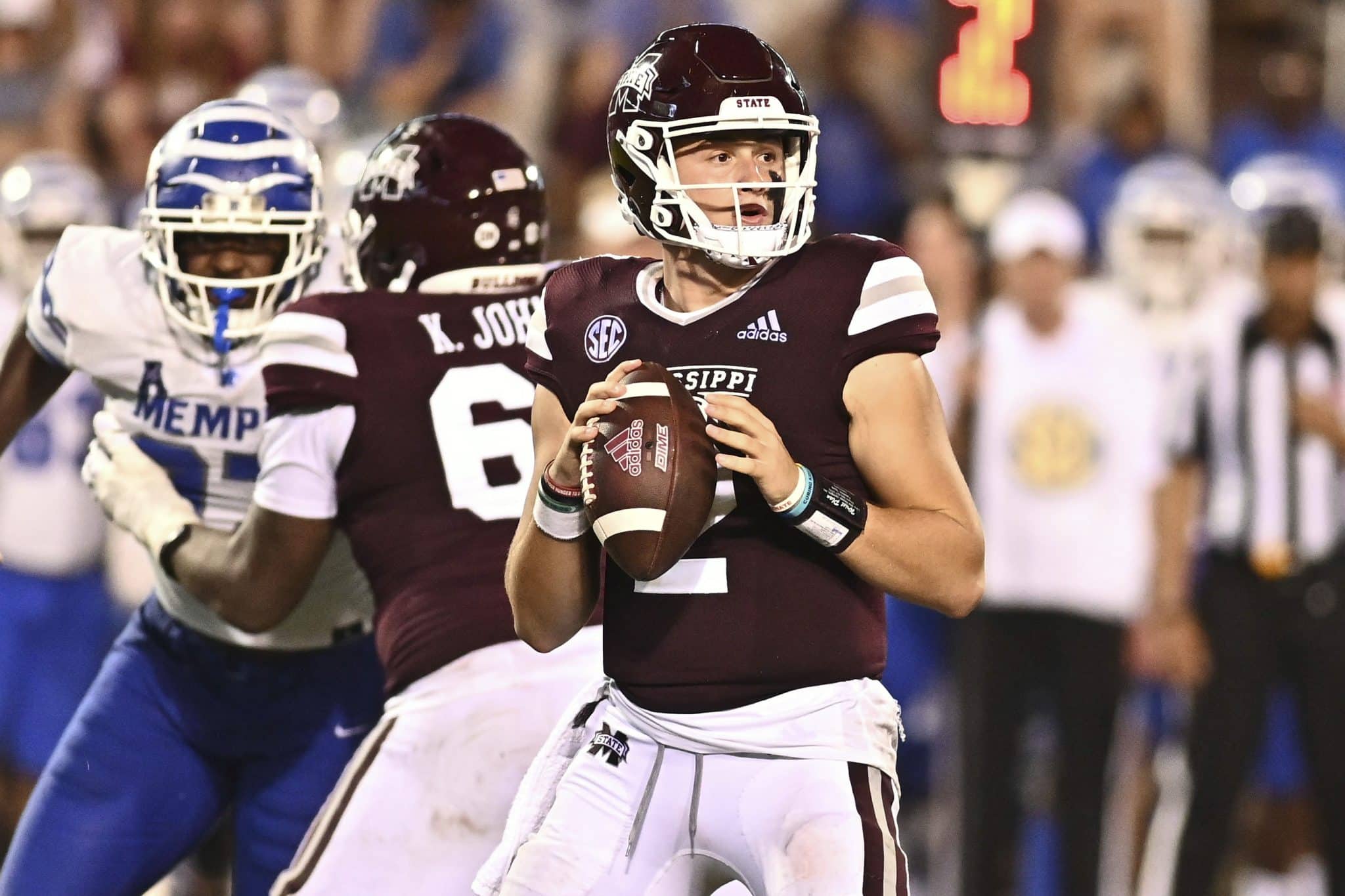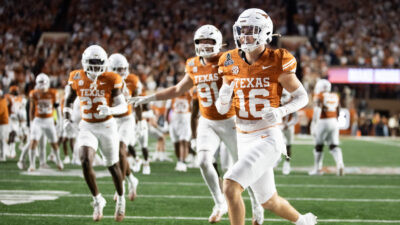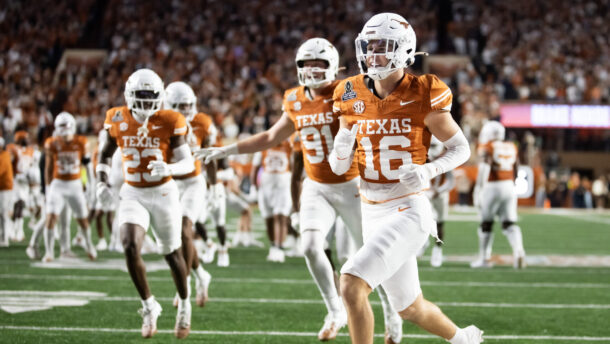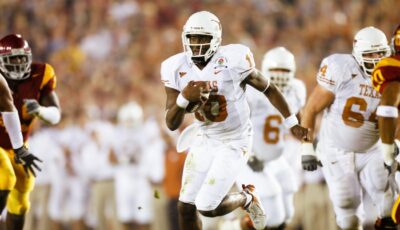
Will Rogers is on a roll again.
He’s operating the Mississippi State passing game at a high degree of efficiency.
Rogers leads the nation in completions per game (38.5) and is 2nd in passing touchdowns (9) and 3rd in passing yards per game (381.5). His touchdown passes have gone to 6 different receivers, and only 3 teams in the country have more players with touchdown catches (all with 7).
That passing success, as well as a fairly good running game as a complement, have contributed to State being 2nd in the country in time of possession at more than 38 minutes per game.
While the ball handlers’ success is easy to see and quantify, they would not be as successful if not for the performance of the Bulldogs’ rebuilt offensive line.
The line is arguably the least experienced unit on a mostly experienced team. But it has been 1 of the keys to decisive victories against Memphis and Arizona.
It will get its biggest challenge of the young season when State visits LSU in its SEC opener Saturday.
Rogers was sacked just once against Memphis and twice against Arizona, throwing a total of 98 passes in the 2 games.
The line features players with experience prior to this season. But the individuals’ familiarity with the positions they are playing in 2022, as well as their familiarity with one another in the current composition of the unit, is not ideal.
Center LaQuinston Sharp is the only starter playing the same position that he played last season.
But if a team is going to have just 1 incumbent in the same place on its offensive line from the previous season, center is a good place to have him. Having one as dependable as Sharp also is helpful.
Sharp, who has been honored as an SEC Offensive Lineman of the Week each of the first 2 weeks this season, snapped the ball 1,002 times last year, and he has played a team-high 1,699 snaps across the line as a Bulldog. He allowed just 2 sacks in 786 passing attempts last season.
The offensive line as a unit entered this season having played 5,175 career snaps, so the line isn’t terribly green. But only 36.6 percent (1,893) of those snaps were taken by players at the positions they are currently manning.
The rest of the line is comprised of left tackle Kwatrivous Johnson, left guard Nick Jones, right guard Cole Smith and Kameron Jones and Albert Reese IV, who essentially are listed as co-starters at right tackle.
The LSU defensive line suffered a major blow when its best player, tackle Maason Smith, suffered a season-ending knee injury in the opening loss to Florida State. The Tigers’ depth isn’t great, and coach Brian Kelly has even said the team might have to play a 3-man front more often than it planned to in Smith’s absence.
Nonetheless, with a starting group of Ali Gaye and B.J. Ojulari on the outside and Jaquelin Roy and Mekhi Wingo on the inside, LSU has a formidable group to line up against State.
The Bulldogs line’s primary responsibility is giving Rogers enough time to operate the passing game effectively, given how often State throws the football and how seldom, relatively speaking, it runs it.
But in the first 2 games, the Bulldogs have made an effort to have some balance, and the running game has been effective.
They ran the ball 18 times in the 1st half against Memphis, though the production was modest (53). But against Arizona, it was much more effective, producing 98 yards on 15 rushes.
“Our offensive line has gotten off to pretty good starts,” Leach said. “It’s been pretty key to the (rushing success).”
In both games, Leach leaned on the run less in the 2nd half, but that doesn’t appear to have been because of any shortcomings by the line.
The Bulldogs have had a 76-yard scoring drive in each of the first 2 games. Against Arizona, they had 7 runs that gained 10-plus yards.
Leach called the line “one of the biggest differences” in the win against the Wildcats.
It’s also one of the main reasons State is tied for 2nd (with LSU) in scoring in the SEC (44 points per game).
Les East is a New Orleans-based football writer who covers LSU for SaturdayDownSouth.com. Follow him on Twitter @Les_East.







